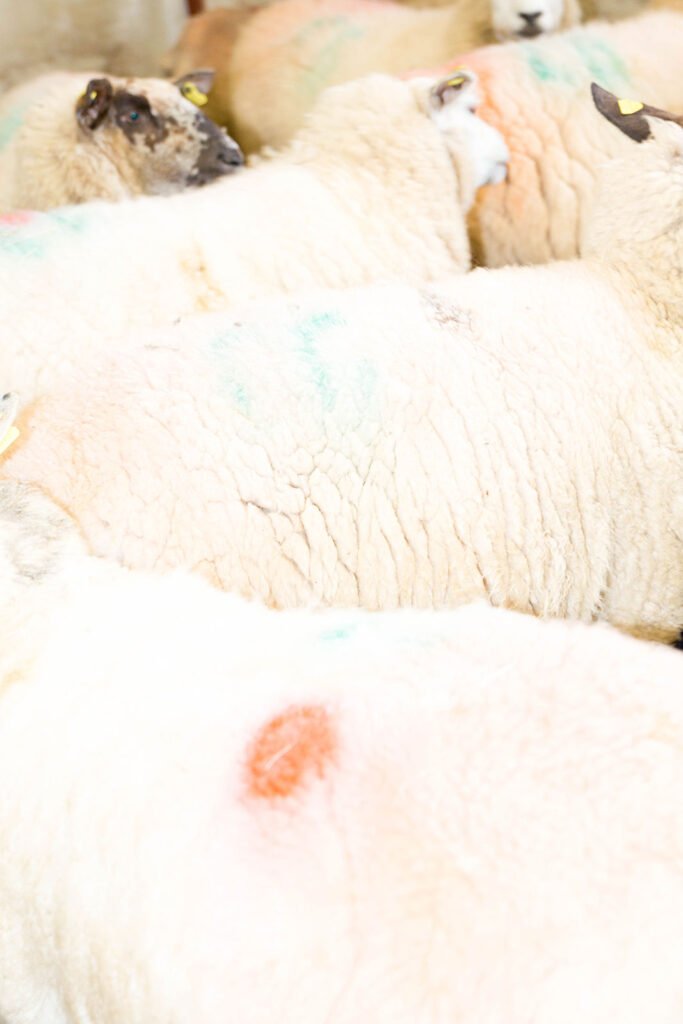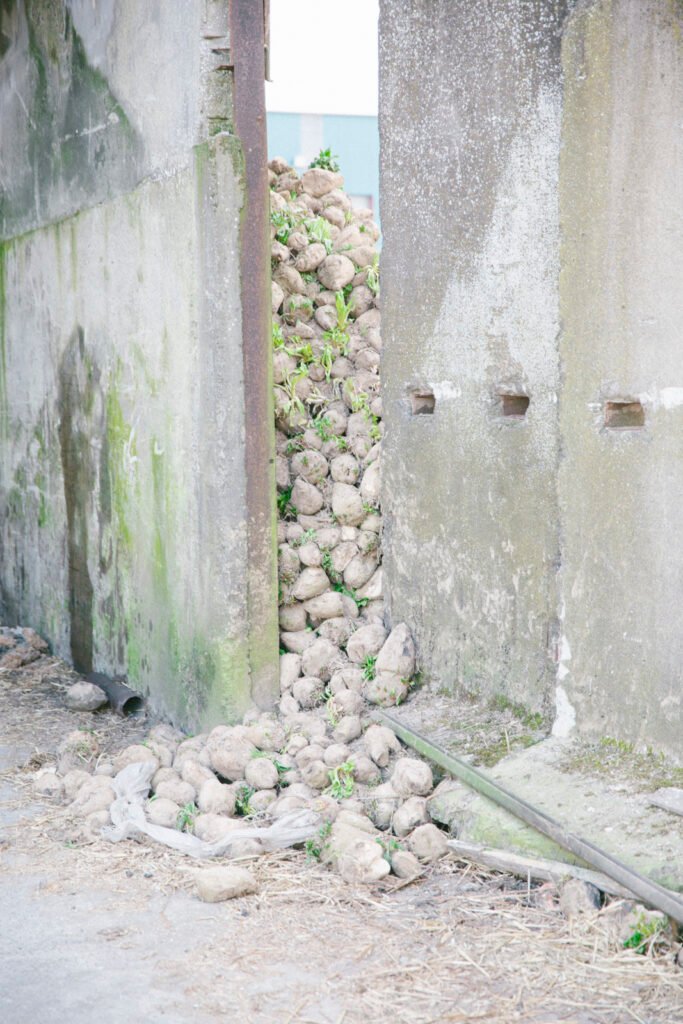Ilaria Sponda: How did Loopies Field come about? What is your relation to agriculture?
Becks Butler: My work explore’s structures of human behaviour, origins and the performance of subjects in photography. Coming from a familial and career-focused background in agriculture, I have developed an interest in merging that background with my practice. Before my studies in Fine Art and Photography, I completed a degree in Agricultural Science. Having grown up involved in the farming community, I have first-hand experience of the physical and mental challenges of agricultural labour. In both agricultural and artistic practices, it is often difficult to draw a line between work and life and I’ve developed an interest in the performance of labour inherent in both industries. Outside my lecturing and art practice, I am still involved in farming and am currently farming 250 acres of tillage. Loopies Field grew from these experiences and my continued interest in the people, techniques and practices. More specifically I am interested in exploring how that agri-economy has affected farm size, social living and attitudes as we face a future of diversification.
IS: Through technology, globalisation and capitalism have been exploiting agriculture. How did the change come about in Ireland according to you?
BB: Throughout history, we have seen agriculture as a shifting economy. Since WW2 there has been a surge in the mass production of crops and livestock through technological advances, with farmers encouraged to maximise yields and improve genetics. Technology itself has somewhat changed the conditions of being a farmer in Ireland today. Depending on your circumstances, things like the quality of your land and your access to grants will often define your income. People can work very hard continuously testing them physically and mentally with very little opportunity of financial gain. It’s very difficult to be so emotionally invested in your labour with often little reward. My Dad refers to farmers as gamblers. They take significant risks. From the time they put the seed in the ground there faced with variables such as weather and market price.
IS: How did photography serve your research on agri-economies’ effects? Is Loopies Field meant as a local or not spatial search on the matter?
BB: The camera acts as a passive observer. I want the dedication of labour to be felt through observing the natural gestures, which I’ve learnt only come from studying someone comfortable in their environment.
IS: Instead of identifying individuals, your images tell about the collective human shift to another way of farming. How would you describe the way those bodies you have seen at work has been affected by the demands of a capitalist economy? Have they adapted to the mechanisation of the industry?
BB: I feel there is very much a performative element running through this work. I refer to the sitters as ‘performing themselves in their environment’. I have been interested in the idea of the photograph as a space that allows this performance to occur. The tools farmers use are also very important as it’s directly related to human effort. The increase in technology has certainly contributed a change in how people work with the land or livestock. It all correlates really with increased mass production. The technology is now such that tractors are driving themselves and cows are being milked by robots. We have come a long way since John Deere’s invention of the steel plough in 1837.
IS: How does the architecture you photographed reflect the change?
BB: The architecture photographed is significant to the project. Grain silos are an interesting structure that silently represent advancements in farming practices. Historically, farmers would have stored enough grain in lofts and sheds. In there simplicity they signify increased production and demand. There was a time in Ireland when very few farms would boat such structures. I am of course interested in Bernd and Hilla Becher as a reference for the taxonomic study of the silos. To quote Hilla Becher herself, “I want to try to be as close as possible, to what the subject wants to be”. There’s something quite beautiful about understanding the architecture of these structures when photographed in mass. The Bechars often referred to their images as ‘anonymous sculpture’s, a term I often think about when making my images.
IS: There’s a distinctive quality in your work that comes from the mixed aesthetic handling. What are the ideas behind your use of both traditional and contemporary photography?
BB: I had been studying the work of sociologists McKinney and Green who travelled across Ireland documenting traditional rural life often through staged images of farming techniques. Its purpose at the time was to archive Irish cultural heritage and preserve a vanishing way of life. Their images sparked a curiosity in me. Their subject is often quite performative. I have been following their methodology to capture a very different image of agricultural aesthetics through contemporary practices. In my work, I’ve been implementing sculptural techniques using tools and natural gestures as part of the photographic process to create ‘work portraits’ capturing individuals as they perform themselves in familiar environments. The pastel colours are an integral part of the image aesthetic. These colours are quite nostalgic, found everywhere on farms from fertiliser bags to sheep raddle spray.
IS: Would you say there’s a sense of protest in your work to raise awareness, or is the documentation of the state of affairs the ultimate cause of Loopies Field?
BB: I don’t want to define the work, but to create a study to help map out the aesthetic of Irish agriculture and how it has changed since the people like McKinney and Green were photographing.
Becks Butler is a graduate of the MA Art and Research Collaboration, IADT. She exhibited her solo show Pushing Boundaries at illuminations in (2017) and has presented work in group shows at Pallas Projects, RIA, The Complex and The Library Project. Her collections have been purchased by the Royal Irish Academy and private collectors both in Ireland and internationally. Becks was awarded the M11 PerCent for Art Commission (2019) and collaborated with PhotoIreland’s, Critical Academy to bring Performing the Post-human: Subject in Photography to the Museum of Contemporary Photography of Ireland (2019) She is a member of Pivot (2020) critical form at The Lab Gallery and was nominated as FUTURES Irish Talent (2020) with her recent body of work ‘Loopies Field’. Becks was commissioned by Culture Ireland’s Initiative Ireland Performs (2020) and most recently is a recipient of the (2021) Arts Council Agility Award.















